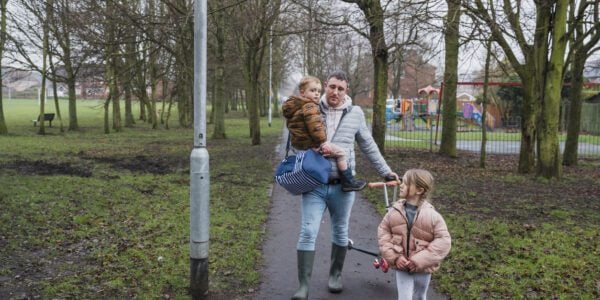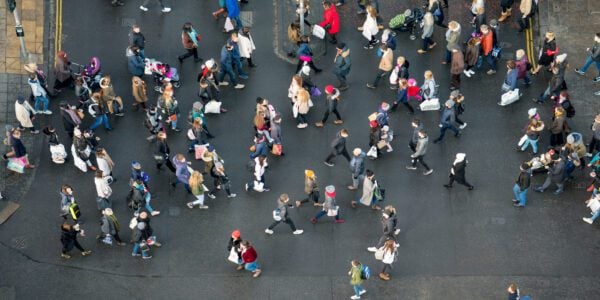The IFS Green Budget 2018, produced in association with Citi and ICAEW and funded by the Nuffield Foundation, is published today.
Delivering on promises to increase spending on the NHS, defence and aid, and just avoiding cuts to other public service spending – a perhaps minimal definition of the “end to austerity” as promised by the Prime Minister- would require an additional £19 billion a year (in today’s prices) by 2022–23 relative to current plans. And this would still leave social security cuts worth £7 billion working their way through the system.
Unless there are substantial tax rises, or much better-than-expected economic growth, the Prime Minister’s aim of “ending austerity” is unlikely to be compatible with the Chancellor’s aim of balancing the books by the mid-2020s. This leaves some tough choices for the Chancellor in the forthcoming Budget.
Having fallen dramatically since its peak in 2009–10, this year borrowing will be at its lowest share of national income since 2001–02. Given that the government is committed to eliminating the deficit entirely, though, the fact that it still stood at £40 billion last year poses an ongoing problem. The Government has already committed to increase spending on the NHS, defence and aid. Just keeping spending on other public services constant in real terms would require an additional £19 billion a year (in today’s prices) by 2022–23 relative to current plans. This would be a minimal definition of the “end of austerity” promised by the Prime Minister. It would still leave social security cuts worth £7 billion working their way through the system.
Good news for the Chancellor is that borrowing this year might be around £5 billion lower than the OBR’s spring forecast of £37 billion; by 2022–23 it might be around £6 billion lower than the forecast of £21 billion. However, this would be a modest revision relative to the amount of uncertainty surrounding the public finances. Any improvement he may be able to announce will not be enough in itself to fund “an end to austerity”.
While headline borrowing is now back to pre-crisis levels, public sector net debt, at around £1.8 trillion, is higher than it was by 50% of national income having risen more quickly over the last decade than over any other decade in since the Second World War. Maintaining borrowing at its current level in ‘good times’ could leave debt rising as a share of national income over the longer term. In times past a deficit at 2% of national income would have seen debt falling quite rapidly as a share of GDP. But low growth forecasts, and student loan accounting which flatters the headline borrowing measure, mean that is not true today. This does not mean that borrowing reductions need to be made immediately, but it does support further consolidation at some point.
The Chancellor faces tough decisions in next year’s Spending Review:
- Even before the next Spending Review period (which will run from 2020–21), there are planned cuts of £4 billion to the day-to-day spending of unprotected departments next year i.e. outside of health, overseas aid and Defence.
- The Government has already committed to increasing day-to-day spending on the NHS, defence and aid by £13 billion between 2019–20 and 2022–23, which includes three years of the five-year NHS funding settlement.
- But the March Spring Statement forecasts implied that day-to-day spending by central government departments overall would be cut by £2 billion between 2019–20 and 2022–23. Keeping to these plans, while meeting the commitments to increase spending, would therefore require day-to-day spending in unprotected areas to be cut by almost £15 billion over those three years.
- So, the Chancellor would need to spend £19 billion more in 2022–23 than currently planned in order to meet commitments and avoid further cuts elsewhere.
- Even ignoring the likely hit to tax revenues from leaving the EU, there is likely to be virtually no “Brexit dividend” by 2022–23. Net savings on contributions to the EU could be less than £1 billion a year by then, and the need for new spending on administration – for example, on border security – could easily exceed this modest increase.
One way to increase spending while bringing the deficit down is to raise taxes:
- Raising tax revenue by 1% of national income (enough to cover £19 billion in new spending) would put the tax burden in the UK at around the highest level seen in the post-war era. One way to do this would be to add one percentage point to all income tax rates, all national insurance contribution rates, and the main rate of VAT. Such an increase would still leave the UK’s tax burden ranked near the middle of OECD countries.
- There are several options for increasing taxes in ways which would particularly affect relatively well-off members of the older generation, and which would in general improve the efficiency of the tax system.
- It might be riskier to try to raise substantial sums from those with high current earnings. We are already highly dependent on a very small group of taxpayers (a quarter of income tax revenue comes from just 0.6% of adults).
- Corporation tax increases could bring in substantial revenue, but are not a free lunch. Cancelling the planned cut from 19% to 17% due in 2019–20 would raise around £5 billion in the short run, though less in the longer term. Like all taxes, corporation tax is borne ultimately by households, through lower wages for workers, higher prices for consumers, or lower returns for shareholders.
Paul Johnson, Director of the IFS and an editor of the Green Budget, said:
“The decision over the spending review envelope will probably be the biggest non-Brexit related decision this Chancellor will make. He has a big choice. He could end austerity, as the prime minister has suggested. But even on a limited definition of what that might mean would imply spending £19 billion a year more than currently planned by the end of the parliament. An increase of that size is highly unlikely to be compatible with his desire to get the deficit down towards zero. Alternatively, the Chancellor could stick to his guns on the deficit and leave many public services to struggle under the strain of a decade and more of cuts. He could reconcile these demands by raising taxes, and in principle there are plenty of good options, but the overall tax burden is already high by UK historical standards and he could be constrained by the lack of a parliamentary majority. This is going to be the toughest of circles to square.”






















































